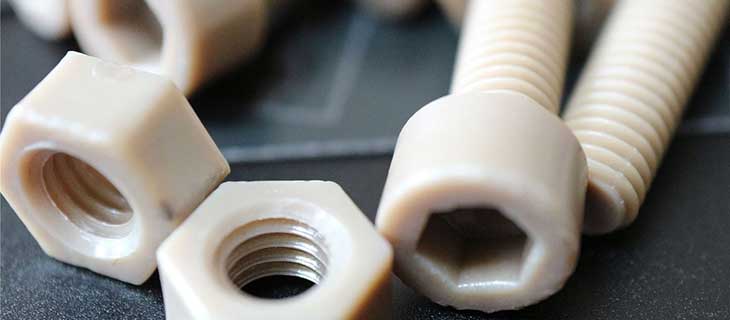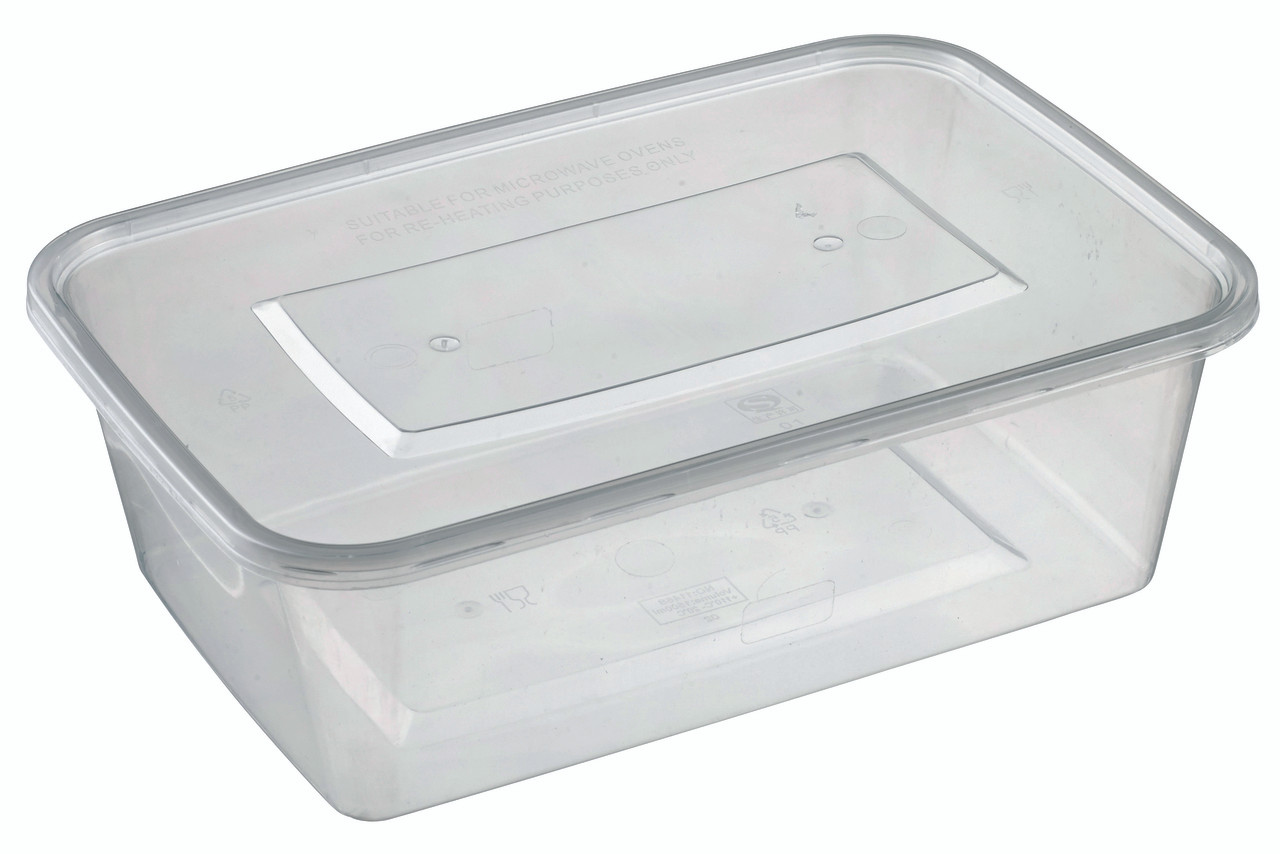Injection moulding
Injection moulding is a manufacturing process for producing parts by injecting molten material into a mould, or mold. Injection moulding can be performed with a host of materials mainly including metals (for which the process is called die-casting), glasses, elastomers, confections, and most commonly thermoplastic and thermosetting polymers. Material for the part is fed into a heated barrel, mixed (using a helical screw), and injected into a mould cavity, where it cools and hardens to the configuration of the cavity.[1]: 240 After a product is designed, usually by an industrial designer or an engineer, moulds are made by a mould-maker (or toolmaker) from metal, usually either steel or aluminium and precision-machined to form the features of the desired part. Injection moulding is widely used for manufacturing a variety of parts, from the most minor components to entire body panels of cars. Advances in 3D printing technology, using photopolymers that do not melt during the injection moulding of some lower-temperature thermoplastics, can be used for some simple injection moulds.

Injection moulding uses a special-purpose machine with three parts: the injection unit, the mould and the clamp. Parts to be injection-moulded must be carefully designed to facilitate the moulding process; the material used for the part, the desired shape and features of the part, the material of the mould, and the properties of the moulding machine must all be taken into account. The versatility of injection moulding is facilitated by this breadth of design considerations and possibilities.

Applications:
Injection moulding is used to create many things such as wire spools, packaging, bottle caps, automotive parts and components, toys, pocket combs, some musical instruments (and parts of them), one-piece chairs and small tables, storage containers, mechanical parts (including gears), and most other plastic products available today. Injection moulding is the most common modern method of manufacturing plastic parts; it is ideal for producing high volumes of the same object.
Injection moulding uses a ram or screw-type plunger to force molten plastic or rubber material into a mould cavity; this solidifies into a shape that has conformed to the contour of the mould. It is most commonly used to process thermoplastic and thermosetting polymers, with the volume used for the former being considerably higher.
Thermoplastics are plastic polymers with low melting points that become molten when heated, solid when cooled, and can be remoulded or remelted after the curing process. They’re strong, flexible, and easy to use since post-processing is often minimal or not required.
What’s more, thermoplastics are considered some of the most eco-friendly and non-toxic materials on the market today. They’re ideal for injection moulding, cost-effectively manufacturing parts with complex geometries, and producing repeatable parts in large volumes. Thermoplastics can be used to create a wide range of common household products, from mechanical parts to children’s toys.
Engineers and product designers should consider using thermoplastics for injection-moulded parts, but there are many varieties to choose from. Here’s a guide to the most common thermoplastics, plus tips for product teams on choosing the best type for their next project. Thermoplastics are prevalent due to characteristics that make them highly suitable for injection mouldings, such as ease of recycling, versatility for a wide variety of applications,[3]: 8–9 and ability to soften and flow on heating. Thermoplastics also have an element of safety over thermosets; if a thermosetting polymer is not ejected from the injection barrel in a timely manner, chemical crosslinking may occur causing the screw and check valves to seize and potentially damaging the injection moulding machine.
A breakdown of common thermoplastics:
Thermoplastics can be broken down into two broad categories — amorphous resins and semicrystalline resins. Amorphous resins are typically brittle, but they’re very precise and have good dimensional stability. These thermoplastics are commonly found in plastic utensils, foam cups, and plastic plates.
Semicrystalline resins are more flexible and chemical resistant than amorphous resins but can be challenging to work with. However, this material works well for applications involving continuous wear, structural loads, and friction.
Within the categories of amorphous and semi-crystalline resins, thermoplastics can be broken down further by their performance grade. Thermoplastics can be classified as high-performance or speciality-, engineering-, or commodity-grade. Performance grade increases in tandem with the price. Here are six examples of the most common thermoplastics, along with their classifications.

Polyetherimide (PEI)
PEI is a high-performance amorphous resin. It’s strong, chemical-resistant, and able to withstand temperatures upwards of 217°C. Amorphous resins tend to crack when they come into contact with certain fats and oils, but PEI stands out because it’s tough enough to resist such cracking. PEI is used to make circuit boards, eyeglasses, and sterilization equipment, but it’s most frequently used in aerospace applications.
Polycarbonate (PC)
PC is an engineering-grade amorphous resin. This naturally transparent material is heat-resistant, flexible, and a good electrical insulator. It’s also stronger and more rigid than nylon. Common applications include electrical components, lenses, medical devices, and single-use food containers or water bottles. Polycarbonate isn’t considered food-safe for reusable containers.

Polystyrene (PS)
Polystyrene is a commodity-grade amorphous resin. It’s transparent like polycarbonate but very low in strength and heat resistance. As such, its use-cases are limited to simple products like packing peanuts, foam plates, and cutlery.

Polyetheretherketone (PEEK)
PEEK is a high-performance semi-crystalline resin, and one of the toughest thermoplastics on the market — it is resistant to high temperatures, chemicals, corrosion, and biodegradation. PEEK’s mechanical properties make it an ideal choice for bearings, medical implants, piston parts, and a wide variety of applications in the aerospace, automotive, and chemical industries. Nylon
Nylon is an engineering-grade semi-crystalline resin. It is highly stable, versatile, and resistant to many external factors like abrasion and impact. Nylon also promises low shrinkage and warp. Its applications are wide-ranging. It is silky enough to be used in women’s stockings and other apparel, resistant enough to be used in industrial bearings, and safe enough to be used in medical devices.

Polypropylene (PP)
Polypropylene, a thermoplastic beloved by engineers, is a commodity-grade semi-crystalline resin. PP is strong and highly resistant to stress, impact, corrosion, and fatigue while remaining extremely flexible. Engineers enjoy working with PP because it offers them many (if not all) of the chemical and mechanical properties they require for their respective use-cases at a very low price point. Common applications include household goods, automotive parts, reusable containers, and even carpeting. Key considerations for choosing a thermoplastic
These six common thermoplastics are only the beginning. How can engineers and product designers possibly sift through all of the available options and make the right choice?
The best way to choose a thermoplastic is to start by considering the part’s engineering requirements. The objective is to pick a material that will offer all of the properties the part needs and to do so as cost-effectively as possible. As such, it’s critical to begin by outlining key engineering requirements, which will serve as useful guideposts in evaluating material options. With these guidelines in mind, seek the best compromise between desired mechanical properties and cost.
Many manufacturers use material selection charts to simplify the evaluation process. By pinpointing the materials that lie in the crossover point between two desired variables — say, density and cost — product teams narrow the pool of viable candidates and gain clarity around which materials are likely to prove most effective. Highlight the important engineering requirements that matter, nail down a price range, and select a material that is most cost-effective for the performance needed.

Metals also can be injection moulded with regular injection moulding but require post-processing in that process in which finely-powdered metal is mixed with binder material to create a "feedstock" that is then shaped and solidified using injection moulding. The moulding process allows high-volume, complex parts to be shaped in a single step. After moulding, the part undergoes conditioning operations to remove the binder (debinding) and densify the powders. Finished products are small components used in many industries and applications

Machine :
Injection moulding machine moulds can be fastened in either a horizontal or vertical position. Most machines are horizontally oriented, but vertical machines are used in some niche applications such as insert moulding, allowing the machine to take advantage of gravity. Some vertical machines also do not require the mould to be fastened. There are many ways to fasten the tools to the platens, The most common are manual clamps (both halves are bolted to the platens); however, hydraulic clamps (chocks are used to hold the tool in place) and magnetic clamps are also used. The magnetic and hydraulic clamps are used where fast tool changes are required.

The person designing the mould chooses whether the mould uses a cold runner system or a hot runner system to carry the plastic and fillers from the injection unit to the cavities. A cold runner is a simple channel carved into the mould. The plastic that fills the cold runner cools as the part cools and is then ejected with the part as a sprue. A hot runner system is more complicated, often using cartridge heaters to keep the plastic in the runners hot as the part cools. After the part is ejected, the plastic remaining in a hot runner is injected into the next part.
There are 3.5 types of machines :
Hydraulic: The hydraulic process has historically been the only option available to moulders until introduced the first all-electric injection moulding machine in 1983. Hydraulic machines, although not nearly as precise, are the predominant type in most of the world, with the exception of Japan.
Mechanical: Mechanical-type machines use the toggle system for building up tonnage on the clamp side of the machine. Tonnage is required on all machines so that the clamp side of the machine does not open (i.e. tool half mounted on the platen) due to the injection pressure. If the tool half opens up, it will create a flash in the plastic product.
Electric
The electric press, also known as Electric Machine Technology (EMT), reduces operation costs by cutting energy consumption and also addresses some of the environmental concerns surrounding the hydraulic press. Electric presses have been shown to be quieter, faster, and have higher accuracy, however, the machines are more expensive.
- Hybrid injection (sometimes referred to as "Servo-Hydraulic") moulding machines claim to take advantage of the best features of both hydraulic and electric systems but in actuality use almost the same amount of electricity to operate as an electric injection moulding machine depending on the manufacturer.
A robotic arm is often used to remove the moulded components; either by side or top entry, but it is more common for parts to drop out of the mould, through a chute and into a container.